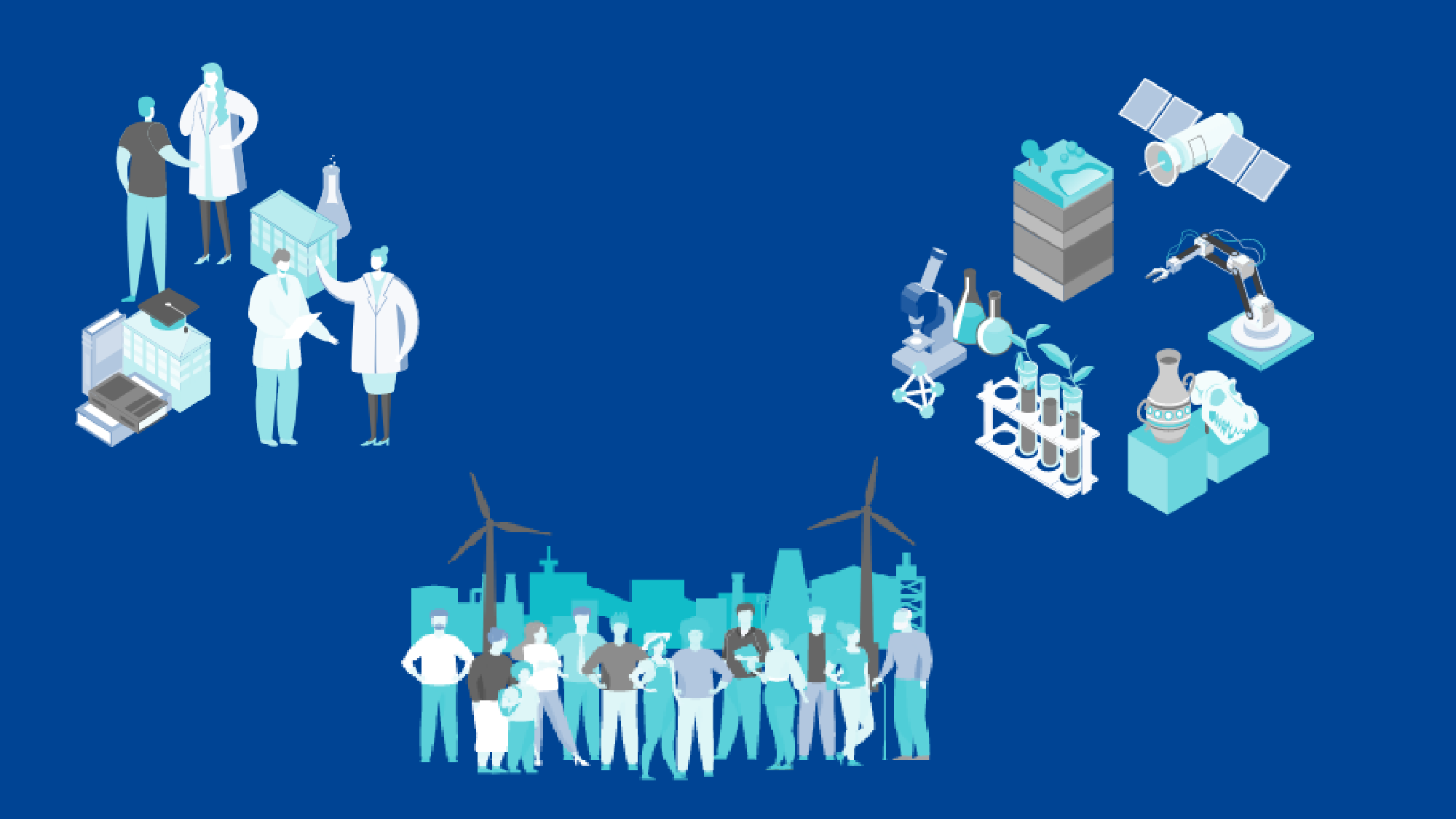From 2021, European researchers have a new ally in the path to Open Science. The European Comission opened up a platform to publish scientific articles coming from the research it funds (both from the Horizon 2020 and Horizon Europe frameworks). The platform, called Open Research Europe, is free to publish and free to read (open access), and aims for fast and transparent publication.
Alicia Estacio Gomez, Content Acquisition Editor at Open Research Europe, came to the Barcelona Biomedical Research Park (PRBB) on February 22nd to explain this platform to the researchers at the park. Here’s what we learned from talking to her.

What is Open Research Europe: is it a journal? Is it a repository?
It’s a publishing platform. It works as a journal, in the way that it publishes articles and it does peer review. It is not a repository, so if you publish your article in Open Research Europe you cannot publish it anywhere else.
What is its aim and who runs it?
It was created by the EC in March 2021 to help the researchers it funds to publish in Open Access in a quick and free way, helping them comply with the open access policy of the EU. Basically to put its hand where it puts its mouth, so to speak.
Open Research Europe is currently managed by F1000, who have operated several other platforms using the same model for many years. Their flagship platform, F1000 Research has been running successfully now for 10 years but F1000 has also worked with other funder platforms on their own platforms for a number of years, such as the Wellcome Open Research with the Wellcome Trust, and Gates Open Research with the Bill and Melinda Gates Foundation.
The original contract runs out in 2024, but a new tender was released by the European Commission at the end of 2022 to continue the platform until at least 2026. Meanwhile, discussions are ongoing with Science Europe and national funders to gauge interest in joining the platform from 2026 to further expand the eligibility criteria and grow the platform further.
How does the publication system work?
When a manuscript is sent to us, it goes first though a pre-publication control, where a team of about 10 people check:
- that at least one of the authors has funding from the EU
- that there is no plagiarism (including self-plagiarism, that is, it has not been published anywhere else)
- that all data is in an open repository and all methods are clearly explained, since our aim is for the research we publish to be completely transparent and increase reproducibility
- that it has the right ethical approvals
- that the English is good enough to be understandable
If it ticks all the boxes, the first version (non peer reviewed) is published on the platform, so it is already visible. That’s why we say it’s a fast publication, because it does not wait for the peer review to happen.
Once this version is published, the article is sent to peer review.
What type of peer review takes place?
There is a team of editors who manage peer review, but it is what we call ‘author-led’ in the sense that we ask authors to suggest 5 potential reviewers, and we use some of these, as long as they have proven expertise (at least 3 papers in the field as lead authors); have no conflict of interest, etc. We also try to ensure that reviewers are diverse in terms of geographic origen, gender, career stage, etc.
And it is of course a post-publication peer review, and open (the names of the reviewers and the reports themselves are published with the article). This openness means anyone can comment (on the article or the reports) and follow the whole process. We think this is also a good learning opportunity for young researchers.
Doesn’t the fact that the reviewers are chosen by the authors ring some bells?
Of course there is always a risk that the reviewer is biased. We have several controls for this: first we check for conflict of interest by avoiding researchers that have worked in the same institution, or co-authored articles, etc. But the second control is the fact that everything is transparent. That means that if a reviewer was to be biased, this would be obvious for everyone to see! We also allow young researchers to do a review with their supervisors or more senior researchers, and both names appear in the report.
“The best quality control of the process is that everything is transparent; the names of the reviewers, their reports, the authors’ responses… So if there should be any bias, it would be obvious to everyone”
Alicia Estacio Gomez (Open Research Europe)
What are reviewers asked to look for?
We are a ‘sound science’ platform, which means we are interested in publishing any results that are sound, robust. We don’t care if they are negative or null results, as long as they are well described, and have been done rigorously.
Apart from their comments the reviewers are asked to give the manuscript a status, which can be:
- approved (if the article is basically good enough, except perhaps some small changes)
- approved with reservations (if, for example, it needs further experiments)
- not approved (if it was not sound enough).
For a paper to be considered as having passed peer review, it needs to have either 2 approved (by two reviewers) or 1 approve and 2 approved with reservations. Once they do, they are sent to the indexing platforms, such as Scopus, Google scholar, and soon PubMed, from which we are still waiting to hear. This is because until now we didn’t have enough articles in the medical/life sciences field to be included, but we hope to be very soon now.
What happens with papers that are not approved?
The authors always have the opportunity to send a new version responding to the reviewers’ concerns. But in any case, the paper is never ‘unpublished’. It is a paper, it has a DOI, although the DOI specifies whether it has been approved or not. And so it cannot be published elsewhere either.
I think that it’s just a different concept of paper. The idea of the Commission is that articles not commodities. If you do a project (with public money) you publish the results, however good or bad they are. And then the community (starting with the reviewers) can comment on whether they are sound or not. We publish the results of the project, the reviewer’s evaluation, the authors’ responses,… its’ a ‘conversation’ between experts, and any reader can take their own conclusions.
It is a different concept of ‘publication’. The idea of the European Commission is that if you do a project with public money, you must publish the results, however good or bad they are.
Does it have an IF?
Open Research Europe does not have an IF, and it won’t have one. This is actually a conscious decision from the Commission, because the IF is not a good metric for articles, and it should not be an aim. So it wants to move away from this. It does include other article-level metrics, though, such as number of views, downloads, or citations. Another feature is that you can see from where in the world people are looking at it.
What is the cost of this platform?
We are totally transparent about costs, too. Obviously for authors and readers it has no cost, but everything has a cost! The EC pays 780€ per article, and you can see in our website what % of this goes to what part of the process (pre-publication checks, peer review managemeent, author and user support, platform development, etc).
How many papers and what kind have been published in Open Research Europe?
There are 333 articles published so far, as of February 2023: 244 have completed peer review, and of those 182 have passed peer review. So that’s an ‘acceptance’ rate of a bit over 50%.
Regarding the disciplines, we cover all of them, but the majority are in engineering (26%) and social sciences (25%). We also have about 16% in medicine, and also papers in natural sciences (chemistry, physics, biology, mathematics, earth sciences…), although not as many as yet.
We also publish different types of articles, beyond the ‘traditional’ research paper and reviews, such as methods and protocols, clinical trials, software tools, study protocols, or even what we call ‘data notes’. These are basically only data, with their description, but without any analysis or discussion. The idea is to give more visibility to data that perhaps you are not going to use, or has not given you the expected results, etc. You can always put it in a data repository, but if you also publish it here, it increases its discoverability.
We want to capture all different outputs of research, regardless of their relevance.
How can one find an article with such a mix-bag?
We have collections and community gateways to classify the articles. Each article has a tag, so it can be sent to different gateways (for example to evolution and to genomics), so it is easier to find wherever your interest lies.
We also have the role of advisors, researchers who are sensitive to this new way of publishing and who help us create these collections, decide the scope and strategy, etc. but with no editorial role. We also use their help to reach their networks and get more people to know the platform.
This talk took place just before another event at the PRBB on “Open Science and Research Assessment reform“. Indeed, times are changing, and slowly but surely – and not without challenges – the scientific community is advancing towards a more open, transparent and trustworthy research.







